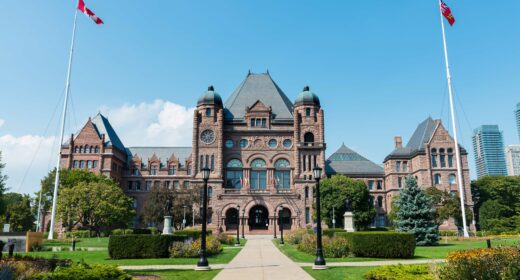April 28 was Lawyers’ Day in the state of Orrisa, India. It was Mujahideen Victory Day in Afghanistan. But this blog post has nothing to with either. Because April 28 was also a very good day for unions, their members and the Canadian Charter of Rights and Freedoms.
This past Thursday, the Ontario Superior Court released its reasons in Canadian Union of Postal Workers v. the Attorney General of Canada. This much-anticipated ruling is the first to apply the Supreme Court of Canada's seminal Saskatchewan Federation of Labour v. Saskatchewan (SFL) decision in a constitutional challenge to back-to-work legislation.
The facts leading to the CUPW Charter challenge were as follows. In 2011, CUPW and Canada Post were attempting to negotiate a renewal collective agreement. They reached an impasse. CUPW launched a series of rotating strikes, while undertaking to ensure delivery of social assistance and other government cheques. Canada Post responded by ordering a national lockout (picture Canada Post, the gun to its own head, yelling “stop or I'll shoot!”). That same day, the government announced its intention to introduce back-to-work legislation. In short order, the Harper government enacted the Restoring Mail Delivery for Canadians Act. The act did the following:
- Restored the expired agreement
- Ordered the postal workers back to work
- Provided heavy fines for any union activity that might encourage employees not to return to work
- Banned all strike activity
- Established by fiat the wage increases to be inserted in, and the duration of, the next collective agreement
- Decreed that a rare form of arbitration, ad hoc final offer selection (FOS), would settle all other terms in the next collective agreement, unless the parties reached an agreement first
- Empowered the Minister to unilaterally appoint the arbitrator
- Directed that the arbitrator be “guided” by factors that were tailor-made to favour Canada Post's agenda – such as what comparator groups would be considered, and a ban on any terms that would worsen the solvency ratio of the pension plan.
The act dramatically shifted the balance of power. Canada Post began to table offers less favourable than those it had already made. CUPW cut back its demands rather than risk the outcome of such a lopsided arbitration process. Under those conditions, CUPW did negotiate a new agreement, which was ratified by a bare majority of the small group of members who actually voted. But CUPW also launched a Charter challenge to the Act.
As these events unfolded, no Canadian Court had recognized a constitutional right to strike. The then-popular view was that the Charter protected only the right to join a union, and the right of the union to negotiate to an impasse; but not a right to strike, nor a right to any other method of resolving impasses.
Then along came the Supreme Court of Canada's decision in SFL. It held that the Charter does protect the right to strike; that this right can be taken away only in limited circumstances; and that where it can be taken away, it must be replaced by an alternate dispute resolution that is “impartial, effective, adequate and fair”.
Applying that precedent in the CUPW case, Justice Firestone found that the provisions banning CUPW strikes violated both freedom of association under ss.2(d), and freedom of expression under 2(b) of the Charter. He found a second violation of freedom of expression in the provision that banned, and made punishable by hefty daily fines, any union conduct that might encourage employees not to return to work. He ruled that none of those violations were saved by s. 1 (which sanctions Charter violations that are “such reasonable limits prescribed by law as can be demonstrably justified in a free and democratic society”).
Justice Firestone's decision will assist two other constitutional challenges in the pipe. The Air Canada Pilots Association (represented by our firm) and the International Association of Machinists and Aerospace Workers have both challenged the Protecting Air Service Act, another Harper-era statute. It too banned strikes; imposed a stilted ad hoc FOS arbitration model on unions; empowered the Minister to appoint the arbitrator; and ordered that the arbitrator be “guided” by factors blatantly favouring the employer's agenda. It too was triggered by an employer holding a gun to its own head, namely Air Canada's theatrical threat that it would lockout its pilots, thus shutting down the entire airline.
Stay tuned.


